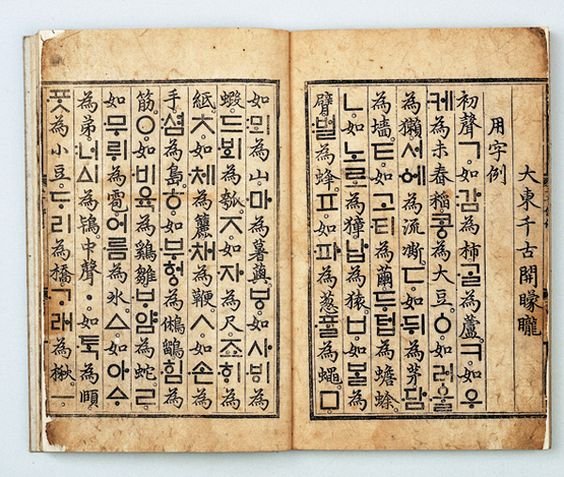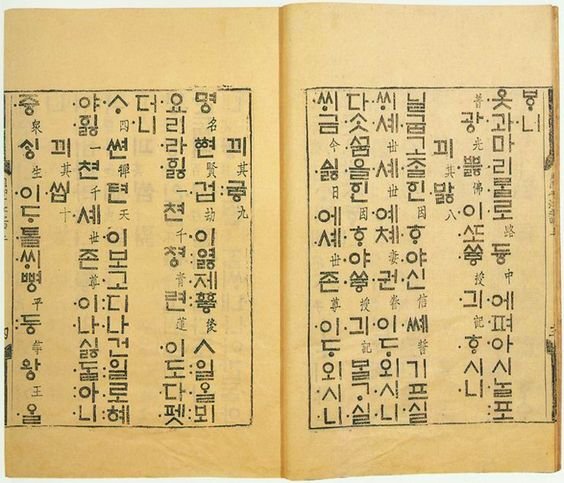THE K-POP LANGUAGE: KOREAN
- Ancient history Asian history
 Sakshi B
Sakshi B- May 23, 2023
- 0
- 308

KOREAN LANGUAGE ORIGIN
The origin of the Korean language is a topic of much debate among linguists and scholars. While there is no conclusive evidence as to the exact origin of the language, it is believed to be a member of the Koreanic language family, which is considered a branch of the Altaic language family. This family of languages includes Mongolian, Tungusic, and Turkic languages, among others.
The Korean language is believed to have evolved from the Old Korean language, which was spoken during the Three Kingdoms period in the 1st century CE. The language underwent significant changes during the Goryeo and Joseon dynasties, and it was during this time that the modern Korean language emerged.

One of the unique features of the Korean language is its writing system, which is known as Hangul. Hangul was created in the 15th century during the Joseon dynasty, and it is a phonetic writing system that uses a combination of consonants and vowels to represent sounds.
HISTORY OF KOREAN LANGUAGE
The Korean language has a rich history. It is the official language of both North and South Korea, and is spoken by over 75 million people worldwide. In this article, we will explore the history of the Korean language, as well as its unique features.
The Korean language is a member of the Koreanic language family, which is a sub-group of the larger Altaic language family.
The history of the Korean language can be traced back to the Three Kingdoms period in the 1st century CE, when the Old Korean language was spoken. The language underwent significant changes during the Goryeo and Joseon dynasties, and it was during this time that the modern Korean language emerged.

During the Goryeo dynasty (918-1392 CE), the Korean language began to be influenced by the Chinese language, as Korea had close cultural and economic ties with China. Many Chinese loanwords were introduced into the Korean language during this period. However, the Korean language also developed its own unique vocabulary and grammar, and it became more distinct from Chinese.
The Joseon dynasty (1392-1897 CE) was a time of significant cultural and linguistic development in Korea. King Sejong the Great commissioned the creation of a new writing system that would be easier for the common people to learn. So, the Korean language underwent many changes during this period, as scholars began to develop a more standardized form of the language. This new system, known as Hangul, was introduced in 1446 and is still used in modern-day Korea. The first written records of the Korean language date back to the 15th century, during the Joseon Dynasty. At this time, a writing system known as Hanja was used, which was based on Chinese characters which was replaced by the newly formed Hangul system.

FEATURES OF KOREAN LANGUAGE
One of the most unique features of the Korean language is its grammar. Unlike most languages, Korean does not use articles (a, an, the) or plurals. Instead, the meaning is conveyed through context. For example, the sentence “I ate apple” in Korean would simply be “사과 먹었어” (Sagwa meogeosseo), without the need for an article or plural.
Another interesting feature of the Korean language is its honorifics system. Korean has a complex system of honorifics that is used to show respect to people of different social statuses. This system includes different verb endings and pronouns, depending on the level of respect required in the situation.
Korean also has a unique sound system, with many sounds that do not exist in other languages. For example, Korean has both aspirated and non-aspirated consonants, which are pronounced with a puff of air or without, respectively. Additionally, Korean has a pitch accent system, where the pitch of a syllable can change the meaning of a word.
CHINESE INFLUENCE ON KOREAN
Due to the significance of Chinese characters for reading and writing in ancient Korean, Chinese also had a significant impact on Korean culture in other ways, such as through numerous borrowings. These words are typically regarded as having entered Korean between the seventh and thirteenth centuries CE, a period in which China greatly influenced all of its neighbours, including not only Korea but also Japan and Vietnam, in terms of literature and culture. Between 50 and 70 percent of Korean vocabulary today is made up of words that were taken from Chinese, and many common words in Korean are also heavily influenced by Chinese.

These words were adapted more than a thousand years ago, and due to variations in sound in both Korean and Chinese, they typically don’t sound very comparable to contemporary spoken Chinese:
MANDARIN CHINESE | KOREAN | JAPANESE | |
“future” | wei-lai | mi-rae | mi-rai |
“connection” | guan-xi | kwan-gye | kankei |
If you have studied an alternate East Asian language, such as Japanese or Chinese, learning Korean is extremely cool because you can begin to unravel the earliest relationships between the vocabulary these languages adopted from one another. In time, you’ll even be able to guess the pronunciation of a Korean phrase just by using a Chinese or Japanese term as a guide.
SOME INTERESTING FACTS ABOUT KOREAN LANGUAGE
- Korean language, language spoken by more than 75 million people, of whom 48 million live in South Korea and 24 million in North Korea.
- Korean is the official language of both South Korea (Republic of Korea) and North Korea (Democratic People’s Republic of Korea).
- Several hundred words of early Middle Korean were written with phonograms in the vocabularies compiled by the Chinese as far back as 1103.
- Nor is there general agreement on the relationship of Korean to other languages.
- Despite its clumsiness, McCune-Reischauer is the system used in this description, and following that system the common surname is written Yi; it sounds like the English name of the letter e. In citing sentences, many linguists prefer the Yale romanization, which more accurately reflects the Korean orthography and avoids the need for diacritics to mark vowel distinctions.

CONCLUSION
In conclusion, the Korean language has a rich history and unique features that make it stand out among other languages. From its introduction of the Hangul writing system to its complex honorifics system and unique sound system, Korean is a fascinating language to study and learn.


